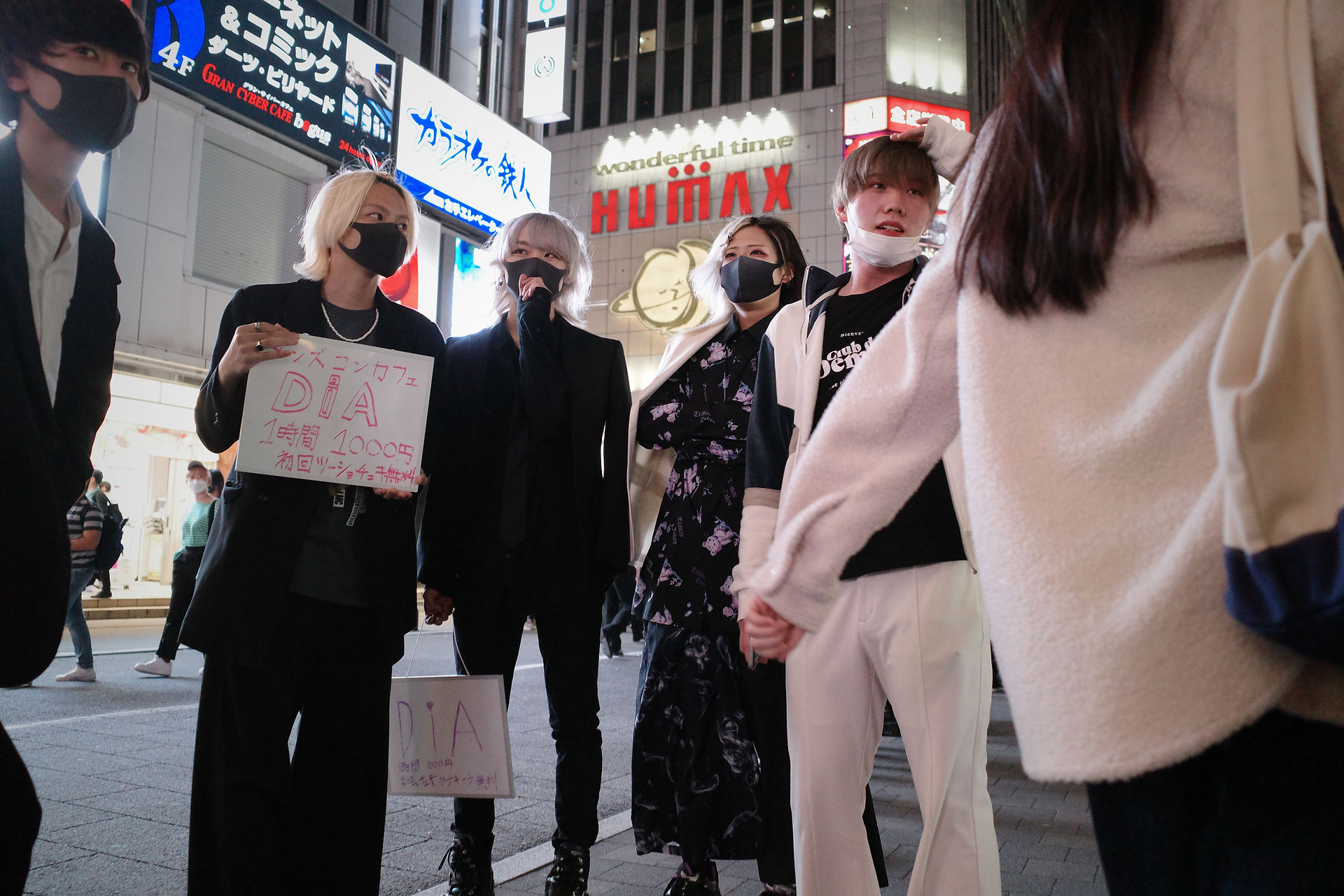
non-Verbal Communication
Facial Expressions
by Mai
Introduction
Facial expressions, like eye contact, relays a great deal of information. Although it is harder to tell with a mask on, most targets will be able to observe a smile or softened expression in contrast to a darker demeanor. Softened facial expressions will make the scouts appear more inviting and like a “safe haven” for those targets who are looking for a space like that. From observation, it appeared that scouts tend to approach girls who are shorter, and not alone (more on appearance here)—objectively appearing vulnerable. It is likely that scouts create meaning for the targets they see, and alter their facial expression to better suit the character they are talking to in order to more likely achieve their intended outcome. This coincides with premise 1 of the theory of symbolic interactionism:
“Humans do not act in reaction to other people but rather in reaction to the meanings that other people hold.” (Spradley, 1980)
Variety in Facial Expression
Softened expression
This includes smiles, laughing, etc.—a noticeably positive and in this case, most likely deliberate expression. A smile is typically deemed a universal sign of warmth and happiness, despite there being major differences in meaning behind facial expression depending on culture (Dalgeish, 1999). Personal experience also shows how smiles make people appear more inviting and trustworthy—an important component for someone who is trying to recruit others into an industry that often lacks transparency.
Although the form of facial expression as non-verbal communication is harder to observe because of the roadblock of masks, it was still possible to observe features such as softened eyes, which personally gave more of a sense of safety in comparison to scouts who lacked this feature.

via Silvan Tomkins 1962
Dark expression
While this is less observable in the fieldsite of Kabukicho as the scouts’ sole goal is to establish a comfortable relationship enough with a target to persuade them, it can still sometimes be seen.
A scout was observed without a mask with a blank expression, lacking emotion and warmth—however, this was during what appeared to be his “down-time”, when he was not actively talking to any targets in the idea. It can be presumed that this facial expression is used when the scout itself does not want to be approached, or is “taking a break” from the character or persona they are showing while working.
The image to the left shows 6 infamous photos used by numerous psychologists to demonstrate different facial expressions shown by people of both Western and non-Western cultures—although this theory of facial expressions being universal has since been challenged, it is still evident that the range and variety in facial expression is an important form of non-verbal communication.
As disappointed as a scout may be with an unsuccessful rate of achieving their goal, their reaction to failure is an expression of neutrality—maintaining their “professionalism”, as well as their metropolitan type character to avoid unnecessary reactions or stimuli.
“Thus the metropolitan type — which naturally takes on a thousand individual modifications — creates a protective organ for itself against the profound disruption with which the fluctuations and discontinuities of the external milieu threaten it.” (Simmel, 1900)
Conclusion
Facial expression, although is still debated over whether the same expressions constitute the same feelings universally, are undeniably one of the biggest indicators of emotion, and often can be more than any form of verbal communication. The usage of facial expressions among scouts, whether they are made up expressions or natural expressions, will subconsciously effect the discourse between scouts and targets almost every time.
